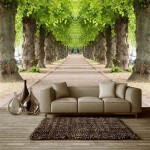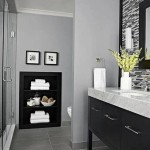Grey Furniture Living Room Decor Ideas
Grey has ascended as a dominant color choice in interior design, particularly within the living room. Its versatility stems from its ability to function as both a neutral backdrop and a sophisticated statement. Grey furniture provides a canvas upon which a myriad of decorating styles can be expressed, adapting seamlessly to minimalist aesthetics, maximalist expressions, or traditional sensibilities. Understanding how to effectively incorporate grey furniture into a living room requires careful consideration of complementary colors, textures, and overall design principles.
The selection of grey furniture should be the foundational step in designing a grey living room. The specific shade of grey chosen will dictate the overall mood and stylistic direction. Light greys contribute to an airy and spacious feel, ideal for smaller living rooms or spaces seeking a brighter ambiance. They pair well with pastel colors and natural materials like wood and linen, further enhancing the sense of openness and tranquility. Medium greys offer a balanced approach, providing a warmer tone that can be easily integrated with a wide range of colors and textures. Dark greys, such as charcoal or slate, imbue a sense of drama and sophistication, best suited for larger rooms that can handle the intensity of the color. These darker shades often pair well with metallic accents and jewel tones to create a luxurious and inviting atmosphere.
Once the grey furniture is chosen, the next step involves selecting complementary colors. This is where the versatility of grey truly shines. It functions as a chameleon, adapting to a wide range of color palettes. A monochromatic grey scheme, employing varying shades of grey, can create a sophisticated and minimalist aesthetic. This approach relies heavily on texture to add depth and visual interest, preventing the space from feeling flat or sterile. Alternatively, pairing grey with brighter colors like teal, mustard yellow, or coral can create a vibrant and energetic living room. These pops of color can be introduced through accent pillows, artwork, rugs, or decorative accessories. When using bolder colors, it is crucial to maintain a balance to avoid overwhelming the space. A rule of thumb is to adhere to the 60-30-10 rule, where 60% of the room is the dominant color (grey), 30% is a secondary color, and 10% is an accent color.
The selection of textures plays a vital role in elevating a grey living room. Texture adds depth, warmth, and visual interest, preventing the space from appearing cold or sterile. Incorporating a variety of textures through textiles, materials, and accessories is key. A plush velvet sofa, for example, adds a touch of luxury and comfort, while a woven rug provides a tactile element underfoot. Consider incorporating natural textures such as wood, stone, or linen to create a more organic and inviting atmosphere. The interplay of different textures creates a dynamic and engaging space that is both visually appealing and comfortable to inhabit.
Key Point 1: Understanding Grey's Versatility and Choosing the Right Shade
The power of grey lies in its versatility. It is not a monolithic color but rather a spectrum of shades, each with its unique characteristics and implications. When selecting grey furniture, it is paramount to consider the specific shade and its impact on the overall ambiance of the living room. Light greys excel at creating a sense of spaciousness and airiness, making them ideal for smaller rooms or those seeking a brighter aesthetic. They reflect light effectively, contributing to a more open and welcoming environment. Light grey pairs particularly well with neutral tones, pastel colors, and natural materials like wood and linen. Medium greys offer a balanced approach, providing a warmer and more inviting hue that can be easily integrated with a wider range of color palettes. They serve as a neutral backdrop that allows other colors and textures to take center stage. Dark greys, such as charcoal or slate, command attention and exude a sense of drama and sophistication. These darker shades are best suited for larger rooms that can handle the intensity of the color without feeling cramped or overwhelming. They pair beautifully with metallic accents and jewel tones to create a luxurious and inviting atmosphere. The selection of the correct grey shade is the cornerstone of a successful grey living room design.
Key Point 2: Incorporating Color to Complement Grey Furniture
While grey provides a neutral foundation, it is crucial to incorporate complementary colors to add depth, personality, and visual interest to the living room. The choice of complementary colors will depend on the desired aesthetic and the specific shade of grey used in the furniture. A monochromatic scheme, employing varying shades of grey, can be incredibly sophisticated and minimalist. This approach relies heavily on texture to add depth and prevent the space from feeling flat or sterile. Consider incorporating different textures, such as velvet, linen, and wool, to create a visually engaging and tactile environment. For those seeking a more vibrant and energetic space, pairing grey with brighter colors like teal, mustard yellow, or coral can be a highly effective strategy. These pops of color can be introduced through accent pillows, artwork, rugs, or decorative accessories. It is crucial to maintain a balance when using bolder colors to avoid overwhelming the space. The 60-30-10 rule provides a useful guideline: 60% of the room should be the dominant color (grey), 30% should be a secondary color, and 10% should be an accent color. This ensures a harmonious and visually appealing composition.
Key Point 3: The Importance of Texture in a Grey Living Room
Texture plays a pivotal role in elevating a grey living room, adding depth, warmth, and visual interest. Without texture, a grey space can easily appear cold, sterile, or one-dimensional. Incorporating a variety of textures through textiles, materials, and accessories is essential for creating a dynamic and inviting environment. Consider the tactile qualities of different materials when making selections. A plush velvet sofa, for example, adds a touch of luxury and comfort, while a woven rug provides a tactile element underfoot. Incorporating natural textures, such as wood, stone, or linen, can create a more organic and inviting atmosphere. The juxtaposition of smooth and rough textures, such as a leather chair paired with a chunky knit throw, can create a visually stimulating contrast. Pay attention to the texture of walls, floors, and window treatments as well. A textured wallpaper, a hardwood floor, or linen curtains can all contribute to the overall textural richness of the space. The interplay of different textures creates a dynamic and engaging space that is both visually appealing and comfortable to inhabit. Neglecting texture is a common pitfall in grey living room design, so prioritizing its incorporation is key to a successful outcome.
Lighting significantly impacts the perception of grey furniture and the overall ambiance of the living room. Natural light enhances the brightness and airiness of light grey furniture, while artificial light can be used to create a more intimate and inviting atmosphere with darker grey pieces. Layered lighting, combining ambient, task, and accent lighting, is crucial for creating a well-lit and functional space. Ambient lighting, such as overhead fixtures or recessed lighting, provides overall illumination. Task lighting, such as reading lamps or desk lamps, provides focused light for specific activities. Accent lighting, such as spotlights or wall sconces, highlights architectural features or artwork. The strategic placement and selection of lighting fixtures can dramatically alter the mood and appearance of a grey living room, enhancing its overall appeal and functionality.
Artwork and accessories provide the finishing touches that personalize and complete a grey living room. Artwork can introduce color, pattern, and visual interest, complementing the grey furniture and reflecting the homeowner's personal style. Select artwork that resonates with the overall aesthetic of the room and consider the scale and placement of each piece. Accessories, such as vases, sculptures, and decorative objects, add layers of detail and personality. Choose accessories that complement the color palette and textures of the room, and arrange them in a balanced and visually appealing manner. Plants can also add a touch of natural beauty and freshness to a grey living room, softening the overall aesthetic and promoting a sense of well-being. The careful selection and arrangement of artwork and accessories are essential for creating a cohesive and personalized living space.
Rugs are an essential element in defining the space and grounding the furniture within a grey living room. The choice of rug can significantly impact the overall aesthetic and feel of the room. A patterned rug can introduce color, texture, and visual interest, complementing the grey furniture and adding personality to the space. Consider the size, shape, and material of the rug when making a selection. A large rug can anchor the entire seating area, while a smaller rug can define a specific zone within the room. Wool rugs provide warmth and durability, while synthetic rugs offer stain resistance and affordability. The color and pattern of the rug should complement the overall color palette and style of the room. A neutral rug can provide a subtle backdrop, while a bold rug can serve as a focal point. The selection of the right rug is crucial for creating a cohesive and visually appealing living room.
Window treatments play a significant role in controlling light, providing privacy, and adding style to a grey living room. The choice of window treatments should complement the overall aesthetic and functionality of the space. Sheer curtains can filter light and create a soft, airy ambiance, while blackout curtains can provide privacy and block out unwanted light. Blinds and shades offer versatility in controlling light and privacy. Consider the color, pattern, and material of the window treatments when making a selection. Neutral window treatments can blend seamlessly with the grey furniture, while patterned window treatments can add a touch of visual interest. The length of the window treatments can also impact the overall appearance of the room. Floor-length curtains can create a more formal and elegant look, while shorter curtains can create a more casual and relaxed feel. The selection of the right window treatments is essential for creating a comfortable and stylish living room.

Grey Couch Living Room Ideas Decoholic

34 Gray Couch Living Room Ideas Inc Photos Decor Dark Grey Modern

Grey Couch Living Room Ideas For Your Home Designcafe

20 Small Apartment Living Room Design And Decor Ideas To Turn Cramped Into Cozy Modern Farmhouse

Grey Sofa For Living Room Design Ideas Designcafe

21 Grey Living Room Ideas

12 Gorgeous Gray Living Room Ideas Decor

34 Grey Couch Living Room Ideas That Complement Any Space

Gray Living Room Ideas 15 For Decor

Grey Couch Living Room Ideas In 2025 Couches Decor
Related Posts







